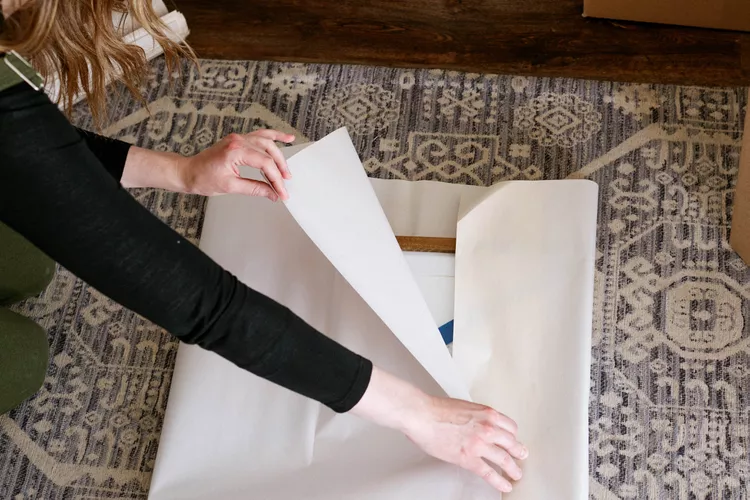
How To Pack and Ship Your Artwork?


Have you ever poured your heart and soul into creating something amazing but found yourself unsure about how to pack it and ship it to interested buyers? Every artist dreams of ensuring their artwork reaches customers safely and making every sale a success. They aim to avoid any setbacks that could result in lost sales or damaged artwork.
Transporting artwork can be quite challenging, as each piece has its unique requirements. Moreover, external factors such as weather conditions and the handling of packages during shipping can introduce uncertainties. Whether you’re a painter, sculptor, or designer, delivering your work from your studio to the eager hands of your customers can sometimes feel like solving a difficult puzzle.
It’s important to protect your artwork when you’re shipping it. Make sure to pack and ship your artwork carefully so it doesn’t get damaged. Also, try to make the experience of opening the package exciting and enjoyable for the buyer. This can make them more likely to come back and buy more of your artwork in the future. Packaging is a big deal in the art world, so you should pay close attention to it.
But no need to worry! This blog will provide you with useful tips on packing and shipping your work. These tips will equip you with the confidence and skills to handle your packing and shipping with ease.
So, let’s get started.
How to Pack and Ship Your Artwork?

As an artist, whether you create artwork for sale or as a hobby, you understand the immense amount of time and effort that goes into your craft.
From selecting a subject to composing the artwork, using materials, and framing the final piece, the entire process can take hours, if not days, to complete. It can be disheartening when all your hard work doesn’t result in the financial return it deserves. Investing your heart and soul into a piece of art and receiving nothing in return can be discouraging. (Take a piece of advice from the ATH podcast they help Dealing with Anxiety, Overworking and self-care)
A well-thought-out packing strategy serves as a valuable tool to achieve this goal. As artists, we constantly seek ways to turn our creative passion into a sustainable business. However, determining the right packaging for your artwork can still be challenging.
Here are some steps to help you pack artwork effectively:
- You will need acid-free tissue paper, bubble wrap, packing tape, cardboard corners or foam protectors, a sturdy box, and labels.
- Before packing, ensure the artwork is clean and free from dust or debris. Use a soft brush or cloth to gently remove any particles if needed.
- Place a layer of acid-free tissue paper over the artwork’s surface to prevent direct contact with other packing materials.
- Carefully wrap the artwork with bubble wrap, ensuring all corners and edges are well covered. Secure the bubble wrap with packing tape.
- For framed artwork, protect the corners with cardboard corners or foam protectors to prevent damage. These can be secured with tape or ties.
- Select a sturdy box that is slightly larger than the artwork. Line the bottom with cushioning material like bubble wrap or foam peanuts. Place the wrapped artwork in the box and fill any remaining gaps with more cushioning material to prevent movement.
- Close the box securely and reinforce the seams with packing tape. Label the box as “fragile” and include any other necessary handling instructions.

- Take photos of the packed artwork and list the contents for reference. This will be helpful for insurance purposes or in case of any damage during transit.
- For valuable or delicate artwork, seeking professional crating and shipping services may be advisable. These experts have specialized knowledge and materials to ensure the artwork is handled and transported safely.
Remember, each artwork may have specific requirements, so adapting the packing method is essential. Consulting with a professional art handler or shipping service can provide additional guidance and expertise if you’re unsure or have particularly valuable or delicate pieces.
Your paintings are precious and often hold sentimental value, making them challenging to transport or ship, especially when moving long distances. It doesn’t matter if your artwork is big, old, or valuable—it requires careful handling.
If you’re moving across the country and need to ship your artwork, you have these options:
Do it yourself with a rented truck:
For small or local moves, renting a truck and doing the move yourself can be the most cost-effective choice. If you don’t have much to move, aren’t going far, and can handle the loading and unloading (with the help of friends, family, or employees), this option may work well.
To ensure the safety of your artwork, it’s best to pack your paintings in your vehicle, if possible. This way, you can personally monitor and control the temperature during transportation.
Hire professional movers:
Hiring professional movers is a reliable option if you prefer to leave the heavy lifting and transportation to experts. They have the experience and equipment to handle fragile artwork with care. Make sure to choose movers specializing in art handling or having experience moving delicate items.
Peer-to-peer shipping or parcel delivery services:
Transport services offer shipping options where individuals traveling in the same direction can transport your artwork. This can be a cost-effective choice, but ensuring proper packaging to protect your artwork during transit is crucial.
Consolidated shipping:
Consolidated shipping involves combining multiple shipments into one shipment, reducing costs, and optimizing space. Art shipping companies often offer consolidated shipping options for artwork. This method may take longer, requiring coordinating with other shipments, but it can be an affordable solution.
By understanding these different approaches to shipping your artwork, you can choose the one that best suits your needs and budget. Remember to prioritize proper packaging and protection for your precious artwork during the journey.
How much Does it Cost to Pack and Ship your Artwork?
The cost of renting art storage facilities can vary based on factors like location and amenities. Prices usually range from $5 to $15 per square foot per month. When choosing a storage solution, consider your budget and collection needs.
Shipping Costs for Gallery Exhibitions -Who Pays for Shipping Artwork?
Figuring out who covers the shipping costs for artwork can be complicated. To avoid confusion, it’s important to make clear agreements. When sending your artwork for an exhibition, include shipping costs and payee information in your agreement.
However in most profit and nonprofit gallery exhibitions, it’s usual for artists to pay for shipping their artwork to the show. The gallery takes care of the return shipment. This agreement avoids confusion and keeps the process smooth. (Looking to take your artwork from the canvas on your wall to an art gallery Read: How to Submit Your Artwork for an Exhibition in an Art Gallery in 2023)
Professional Art Shipping and Storage:
If you need offsite storage for your art collection, consider using a reliable fine art storage facility like Saatchi. They provide secure storage spaces with advanced features such as climate control. Their trained staff knows how to handle personal collections and museum artifacts with care.
These storage facilities offer extra services including shipping arrangements, crate-making for your shipments.
As a leading online art gallery and platform, Saatchi Art not only provides a platform to showcase and sell your artwork but also offers a range of professional services to help you navigate the complexities of packaging and shipping. With their expertise and dedication to ensuring the safe delivery of your precious creations, Saatchi Art is a name you can rely on.
So that’s it for today. I hope these simple ideas will assist you in safely packing and shipping your arwork.
Looking for some Actionable advice and constructive suggestions to make your art stand out. Sign up today!
If you’re an artist and you’re looking for some constructive suggestions for your artwork you should certainly listen to our podcast with Danijela Krha Purssey. This podcast will help you, if you’re curious about how to face the challenges and immense joys of running a thriving business in the dynamic art industry.
I assure you that this episode will inspire you in more ways than you can possibly imagine. Here is the link to the episode of Artists! NEVER GIVE UP ON YOUR DREAMS: How Danijela Built the Leading Contemporary Art Magazine, Beautiful Bizarre Magazine.
With that, I’ll say goodbye and hope to see you soon with another article. Goodbye!
















